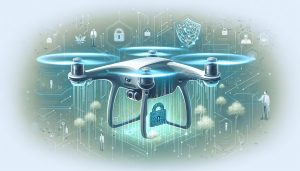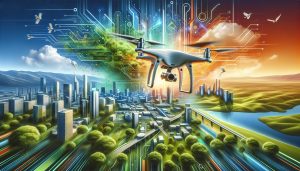In an age where capturing stunning footage of your adventures has never been easier, knowing which DJI drone offers the best Follow Me feature can elevate your content creation to new heights. Whether you’re hiking, biking, or engaging in action sports, having a drone that effortlessly tracks your movements allows you to focus on the activity while ensuring you never miss a moment. The Follow Me function not only enhances the quality of your videos but also simplifies the filming process, making it accessible for both seasoned drone operators and beginners alike. As you explore the range of DJI drones equipped with this impressive tracking technology, you’ll discover models tailored to various skill levels and budgets, each offering unique capabilities to suit your needs. Dive into our guide to unveil the best options for capturing life’s adventures from above, and see how these remarkable drones can help bring your creative vision to life.
Key Features of DJI Drones with Follow Me Mode
DJI drones equipped with Follow Me mode deliver an unmatched combination of intelligent tracking, ease of use, and versatility, making them ideal for capturing dynamic aerial footage. This mode utilizes advanced GPS technology and vision sensors to keep the drone locked onto the subject, whether it’s a moving person, vehicle, or even a bike. By allowing the drone to fly autonomously while recording, users can focus on the action, resulting in cinematic shots that were once only achievable with a dedicated camera crew.
One of the standout features of DJI drones with Follow Me mode is their ability to adapt to various environments and terrains. For instance, the latest models often include obstacle avoidance technology that enables the drone to navigate around trees, buildings, and other potential hazards while maintaining its focus on the subject. This enhances both the safety of the flight and the quality of the footage by minimizing interruptions from obstacles. Additionally, many DJI drones offer customizable tracking options, such as adjusting the distance and altitude, allowing users to capture their adventures from different perspectives.
Furthermore, the flexibility of Follow Me mode extends beyond traditional outdoor activities. With the rise of adventure sports and personal vlogging, drone operators can dynamically follow their subjects through challenging environments like rocky terrains or crowded urban areas. The intelligent algorithms employed in these drones not only ensure smooth tracking but also enhance the overall experience by providing real-time feedback and adjustments. This seamless integration of technology has empowered filmmakers, athletes, and hobbyists alike to elevate their content creation and storytelling to new heights.
Top DJI Models Offering Superior Tracking

When it comes to aerial tracking and filming, DJI stands at the forefront with a lineup of drones that utilize advanced technology to deliver impressive results. The ability to maintain a stable, focused shot of a moving subject has made drones equipped with Follow Me mode increasingly popular among both recreational enthusiasts and professional filmmakers. Here are some of the top DJI models that excel in this area, each offering unique features tailored to a variety of filming needs and environments.
DJI Mavic 3
The DJI Mavic 3 is heralded as one of the best drones for tracking, thanks to its remarkable ActiveTrack 5.0 technology. This drone boasts a dual-camera system-including a 4/3 CMOS Hasselblad camera and a telephoto lens-allowing it to capture stunning, high-resolution footage while adeptly following subjects. With a flight time of up to 46 minutes and an advanced obstacle avoidance system, the Mavic 3 can seamlessly navigate complex environments without sacrificing safety or image quality.
DJI Air 2S
For those seeking a balance between portability and performance, the DJI Air 2S shines with its robust tracking capabilities. Equipped with a 1-inch CMOS sensor, it captures 20 MP stills and 5.4K video, making it a strong contender for dynamic shots. The Advanced Pilot Assistance Systems (APAS) 4.0 enables the Air 2S to intelligently bypass obstacles while maintaining a smooth tracking experience. This drone is ideal for adventure sports, allowing users to capture breathtaking moments without worrying about collisions.
DJI Mini 3 Pro
As one of the most compact options, the DJI Mini 3 Pro offers impressive tracking features without the bulk. Weighing less than 249 grams, it adheres to strict regulations while still providing a robust set of functionalities, including FocusTrack, which encompasses ActiveTrack, Spotlight, and Point of Interest modes. Its dual-camera system allows for high-quality footage even in challenging lighting conditions, making it perfect for vlogging or casual filming during outdoor adventures.
DJI Phantom 4 RTK
For professional applications, the DJI Phantom 4 RTK is engineered for precision mapping and surveying while also supporting effective tracking functions. Its RTK module allows for centimeter-level accuracy, and with the use of automated tracking features, it can outline specific areas or follow subjects over large geospatial data sets. This drone is particularly operated for industrial applications, such as construction and agriculture, where accurate tracking is critical.
In summary, DJI’s range of drones equipped with Follow Me mode provides diverse options tailored to various use cases. Whether capturing breathtaking cinematic shots from the Mavic 3, enjoying the portability of the Mini 3 Pro, or leveraging the precise capabilities of the Phantom 4 RTK, users can find a model that meets their tracking needs. As technology evolves, these drones continue to enhance the way aerial footage is captured, empowering creators to push the boundaries of their storytelling.
Setting Up Follow Me Mode: A Step-by-Step Guide

Setting up the Follow Me mode on your DJI drone can open up a world of creative possibilities, enabling you to capture stunning footage while engaging in various activities. This feature uses advanced computer vision and GPS technology to track a moving subject autonomously. Below is a straightforward guide to help you navigate the setup process for an optimized filming experience.
First, ensure that your drone is fully charged and that you have the DJI Fly or Go app installed and updated on your mobile device. Begin by launching the app and connecting your smartphone to the remote controller. Once connected, power on the drone and wait for it to establish a strong GPS signal-this step is crucial for reliable tracking.
Activating Follow Me Mode
To activate Follow Me mode:
- Take Off: Launch your drone and climb to a safe altitude.
- Select Follow Me: In the app interface, navigate to the mode settings by tapping on the ‘Smart Modes’ option. From there, select ‘Follow Me.’
- Identify Your Subject: Use the tap-to-select feature on the screen to identify yourself or the subject you wish to be tracked. The drone will automatically lock onto this target using its onboard sensors.
- Adjust Settings: Before flying, check the tracking settings to customize the drone’s distance from the subject, altitude, and tracking speed. These adjustments can significantly impact the smoothness and creativity of your shots.
Execution and Monitoring
Once everything is set, you can start moving. The drone will consistently assess your movements and maintain the selected distance, ensuring you remain the focus of the shot. Keep an eye on the drone’s battery life and distance from the remote controller throughout the flight. It’s advisable to practice in open areas free from obstacles to familiarize yourself with the Follow Me mode’s sensitivity and responsiveness.
Using Follow Me mode not only enhances your filming capabilities but also allows you to capture life’s adventures hands-free. As you get comfortable with these steps, consider experimenting with different film angles and terrain to fully leverage your DJI drone’s tracking technology.
Understanding GPS and Vision Positioning Systems

Modern DJI drones leverage advanced technology to ensure reliable tracking and filming capabilities, particularly through their Follow Me mode. This intelligent feature requires an understanding of two critical systems: GPS and Vision Positioning. Together, they enable drones to accurately track and follow subjects while adapting to environmental changes.
GPS (Global Positioning System) primarily provides geographical data, helping the drone determine its location in relation to the tracked subject. High-precision GPS modules are embedded in DJI drones, allowing them to maintain stable positioning and navigate vast open spaces. Drones utilize a combination of satellites to communicate their location, ensuring accurate tracking even in challenging conditions. This is essential for outdoor activities, whether you’re mountain biking, surfing, or simply walking through a park. A solid GPS signal allows users to extend their range while maintaining precise control over the drone’s movements.
On the other hand, Vision Positioning Systems (VPS) enhance the drone’s ability to understand its immediate environment. VPS utilizes optical sensors and cameras to recognize surfaces and obstacles, allowing the drone to fly autonomously indoors or in tight spaces where GPS signals may be weak or unavailable. This technology works by visual feature matching; the drone scans and maps its surroundings to create a three-dimensional understanding of its position. For instance, when you activate Follow Me mode in a crowded area or indoor environment, VPS takes precedence, ensuring that the drone can maintain focus on you without losing track of its surroundings.
Incorporating both GPS and VPS, DJI drones provide seamless tracking performance that empowers users to capture dynamic footage with minimal input. Understanding these systems can greatly enhance your flying experience, helping you customize settings for optimal results based on the environment. This combination of reliable geographic mapping and advanced visual recognition makes DJI’s Follow Me mode a powerful tool for creatives and adventurers alike.
Follow Me Mode vs. Active Track: What’s the Difference?
Understanding the nuances between Follow Me mode and Active Track is essential for any drone operator looking to harness the full potential of DJI technology. Both features are designed to autonomously follow a subject, but they utilize different methodologies and are suited for various scenarios.
Follow Me mode allows the drone to maintain a fixed distance from the subject as it moves, which is ideal for capturing dynamic footage from a steady perspective. This mode is particularly advantageous in outdoor settings where the subject might be moving quickly, such as when biking or running. When activated, the drone uses GPS to lock onto the tracked individual or object, allowing it to adjust its altitude and direction to maintain the desired distance and framing.
In contrast, Active Track provides a more versatile tracking experience by allowing the operator to select specific tracking profiles based on the subject’s movement characteristics. For example, this mode offers options like Trace, Profile, and Spotlight, each tailored to different angles and perspectives. With Trace, the drone follows from behind or in front, while Profile allows for side tracking. Spotlight keeps the camera focused solely on the subject, regardless of the drone’s position. Because of this versatility, Active Track is suitable for a wider range of activities, including more complex movements like cycling down a winding trail or performing aerial stunts.
While both features utilize advanced GPS and Vision Positioning Systems to execute tracking, understanding when to use each can significantly enhance your filming capabilities. For instance, if your goal is to capture smooth cinematic shots in open environments, Follow Me may be the better choice. However, for more dynamic action shots or varied angles, Active Track offers unmatched flexibility. Knowing these distinctions will empower you to choose the right mode for your shooting conditions, ensuring stunning footage with minimal manual control.
Ultimately, leveraging the strengths of both tracking modes allows for an enriched creative experience, regardless of whether you’re a hobbyist or a professional filmmaker. By understanding how these features interrelate and differ, you can optimize your drone’s performance and boost your aerial storytelling.
Real-World Applications of Follow Me Mode
Imagine soaring through the skies while effortlessly capturing stunning images and videos of your adventures, all thanks to the amazing Follow Me mode on DJI drones. This feature has transformed the way creators and enthusiasts document their experiences, as it enables drones to autonomously track and follow a subject in motion, allowing for dynamic filming without the need for constant manual control.
In real-world applications, Follow Me mode shines in various outdoor activities. For instance, mountain bikers can focus on navigating treacherous terrain while the drone captures sweeping aerial shots, showcasing both the rider and the breathtaking landscape. Similarly, runners or skaters can maintain their pace without worrying about the camera angle, as the drone continuously adjusts its position to frame the subject perfectly, resulting in captivating visual storytelling.
The versatility of Follow Me mode extends into the realms of sports and events. Athletes training for competitions can utilize this feature to analyze their movements and improve their techniques. Moreover, during events like marathons or outdoor festivals, drones can provide live aerial coverage, giving spectators a unique perspective while freeing organizers from the hassle of manually controlling camera angles.
When it comes to travel vlogs, Follow Me mode is a game-changer. Content creators can navigate through vibrant city streets or picturesque beaches, allowing viewers to feel as though they are walking alongside the host. This not only enhances viewer engagement but also provides a sense of immersion that static shots simply cannot achieve. As technology advances, the seamless integration of Follow Me mode into everyday adventures elevates the creative potential for drone operators, making this feature an essential tool in modern filmmaking.
Common Issues When Using Follow Me Mode
Using Follow Me mode on DJI drones opens up a new realm of creativity and versatility, yet it is not without its challenges. Several common issues can arise, impacting your filming experience and the performance of the drone. Understanding these issues will help you prepare better and improve the usability of Follow Me mode.
One of the most prevalent problems is the drone’s ability to maintain a stable connection with the subject it is following. Environmental factors such as obstructions, distance, and signal interference can cause the drone to lose track of the subject. For instance, if you’re navigating through wooded areas or urban environments with tall buildings, the drone may struggle to establish a clear line of sight. To mitigate this, always ensure you are operating in open spaces where the signal can remain strong. Regularly checking the drone’s camera feed for connection indicators can help you stay aware of any issues.
Another issue pertains to GPS accuracy. Although Follow Me mode utilizes GPS for tracking, varying levels of satellite signals can lead to erratic behavior. In densely populated areas or locations with poor satellite visibility, you may experience delays in tracking or unintended movements. To counteract this, perform a GPS calibration before flights and consider flying in wide-open, less congested areas to enhance GPS reliability.
Battery life is also a significant concern when using Follow Me mode. Continuous tracking can drain the battery more quickly than traditional flight modes, especially if the tracking subject is moving rapidly or the drone is required to adjust its altitude frequently. Monitoring the battery status throughout the flight is crucial; plan the flight path keeping battery limits in mind to avoid sudden losses in altitude or control.
Finally, be aware of the limitations of the drone’s sensors. Depending on your model, obstacles may not always be detected effectively, posing risks during flights. When using Follow Me mode, make sure to check the surrounding area for potential hazards, and consider switching to manual control if you anticipate complex maneuvers necessary to avoid obstructions.
By recognizing these common issues and preparing accordingly, you can maximize the effectiveness of Follow Me mode on your DJI drone, ensuring a smoother and more successful flying experience.
Safety Tips for Flying with Follow Me Mode
Flying with Follow Me mode can transform your aerial photography experience, allowing the drone to autonomously track and film you while you engage in activities like biking, hiking, or surfing. However, to make the most out of this functionality while ensuring safety, it’s crucial to adopt certain practices.
First and foremost, always assess your surroundings prior to takeoff. Being aware of obstacles such as trees, buildings, or power lines is essential since Follow Me mode typically focuses on keeping you in frame, which can lead to the drone veering into hazards. Create a clear flight path by choosing open areas with minimal interference. This helps the drone maintain a stable GPS signal and reduces the likelihood of losing track of the subject.
Moreover, regular pre-flight checks should include verifying the drone’s battery levels and ensuring that firmware is up to date. Following this, engage Follow Me mode only when the area is free of interference and distractions. For more complex environments, switching to a higher altitude can offer wider visibility, making it easier for the drone to maintain line-of-sight tracking. It’s also wise to monitor the drone’s telemetry during the flight. Keep an eye on the battery status-abruptly landing due to low power can cause unnecessary crashes.
Lastly, engage with the drone’s built-in safety features, such as obstacle avoidance systems. While these systems may not be foolproof, they add an important layer of protection against unforeseen collisions. Always be prepared to take manual control if necessary; understanding when to intervene can mean the difference between a successful flight and an unwanted incident. By adhering to these safety tips, you not only enhance your own flying experience but also cultivate better practices, ensuring enjoyable and successful flights with your DJI drone.
Upgrading Your Drone: Best Accessories for Tracking
To elevate your tracking experience with DJI drones that incorporate Follow Me mode, the choice of accessories can make a significant difference in performance and usability. Selected accessories can enhance your drone’s capability to follow you seamlessly, capture high-quality footage, and ensure longer flight times, thus allowing for greater freedom during your aerial adventures.
Smartphone Holders and Mounts
Using a reliable smartphone holder or mount can greatly improve your control over the drone’s camera while utilizing Follow Me mode. A stabilizing mount can keep your phone steady as you monitor the drone’s live feed and adjust settings on the fly. Look for flexible mounts that allow you to secure your phone to the remote control for easy access.
Battery Upgrades
Longer operational time is key for any drone activity, especially when using Follow Me mode for extended durations. Upgrading to high-capacity batteries can extend your flight time significantly. Always ensure the new batteries are compatible with your specific DJI model to avoid any safety issues.
ND Filters
Neutral density (ND) filters are essential for capturing smooth, cinematic video in bright conditions. By reducing the amount of light entering the camera lens, ND filters allow you to maintain a slower shutter speed, which is crucial for achieving that professional look while your drone tracks you at high speeds.
Carrying Cases and Storage Solutions
Investing in a high-quality carrying case not only protects your DJI drone and accessories but also keeps everything organized for quick setup and teardown. Look for cases with compartments specifically designed for storing extra batteries, props, and your smartphone holder, making your aerial adventures easier and more enjoyable.
Incorporating these accessories into your drone operation can enhance the effectiveness of Follow Me mode, enabling you to focus on your activity while your drone captures the moment. By investing time in the right tools and knowledge, you can ensure that your experience with DJI drones is both rewarding and hassle-free.
Comparing DJI Follow Me Drones: Specs and Features
When considering which DJI drones excel in Follow Me mode, it’s essential to examine their specifications and features closely. Each model offers unique capabilities that can greatly enhance your tracking experience, whether you’re a beginner or a professional. Factors such as flight time, camera quality, obstacle avoidance, and the effectiveness of the tracking technology play a significant role in determining the best device for your needs.
Starting with the Mavic Air 2, this drone boasts an impressive 34 minutes of flight time, combined with a 48MP camera that shoots 4K video at 60 fps. Its SmartFollow 3.0 technology ensures it can maintain a stable tracking experience, adjusting smoothly to varying speeds. Additionally, the drone features advanced obstacle sensing capabilities, making it an excellent choice for outdoor activities like hiking or cycling where you need a reliable follow function without constant manual control.
The DJI Mini 3 Pro also stands out as a compact yet powerful option. Weighing under 250 grams, it offers 31 minutes of flight time and captures stunning 4K video. The Advanced RTH (Return to Home) and obstacle avoidance systems provide extra safety, making it perfect for those venturing into new environments with less experience. Its Follow Me mode is intuitive and caters well to enthusiasts looking to explore their surroundings with ease.
Another noteworthy model is the DJI Mavic 3, ideal for users requiring professional-level footage. Outfitted with a dual-camera setup, it records in 5.1K resolution and features a robust 46-minute flight time. The Mavic 3 employs advanced tracking modes, including ActiveTrack 5.0, which can follow subjects seamlessly even in crowded or complex environments. This level of sophistication is particularly beneficial for filmmakers and content creators who demand high-quality visual output alongside effective tracking.
In summary, when comparing DJI drones equipped with Follow Me capabilities, it’s crucial to assess flight time, camera quality, and tracking technology. Selecting the right drone ultimately depends on your specific needs-whether you prioritize compact design, advanced filming capabilities, or ease of use. Each model in DJI’s lineup offers distinct advantages that can significantly enhance your drone flying experience while allowing you to capture breathtaking moments effortlessly.
User Reviews: Experiences with DJI Follow Me Drones
User experiences with DJI’s Follow Me drones reveal a rich tapestry of applications and insights, underscoring how these advanced features enhance both recreational and professional flying. Users often express awe at the tracking capabilities of models like the Mavic Air 2 and Mini 3 Pro, emphasizing their agility and responsiveness when following moving subjects. For instance, outdoor enthusiasts have reported using the Follow Me mode while hiking or mountain biking, finding that the drones effectively adapt to varying speeds and terrain. This adaptability allows them to capture stunning aerial footage without needing constant manual adjustment, making it an invaluable tool for creators who document their adventures.
Moreover, drone operators appreciate the ease of use that comes with activating Follow Me mode. Many highlight that, with just a few taps on the DJI Fly app, the drones lock onto a subject quickly and maintain a stable, cinematic perspective, even in complex environments. The intuitive interface is a significant plus for beginners who may not have extensive flying experience but want to achieve high-quality shots effortlessly. Conversely, experienced users point out that while the Follow Me feature is generally reliable, it is crucial to be mindful of environmental factors like GPS accuracy and potential obstacles that might interfere with the drone’s sensor capabilities.
When discussing specific models, user reviews paint a vivid picture of the differences in performance. For instance, Mavic 3 users rave about the high-resolution video quality and dynamic object tracking in crowded settings, proving invaluable for professional filmmakers who need to capture intricate details without losing focus. In contrast, those using the Mini 3 Pro often commend its compact design and portability, allowing them to easily bring the drone on travels while still benefiting from impressive flight times and quality footage.
Finally, a frequent piece of advice among users is to familiarize oneself with the drone’s settings and capabilities before heading out for a significant shoot. Understanding the nuances of how Follow Me mode interacts with various landscapes and subjects can elevate the flying experience and lead to more creative and successful outcomes. By leveraging user insights and shared experiences, aspiring pilots can better navigate their own journeys, enhancing both safety and creativity in their drone operations.
Future Trends in Drone Tracking Technology
As drone technology evolves, the future of tracking capabilities, particularly in DJI drones with Follow Me mode, is set to redefine how pilots capture dynamic scenarios. One significant advancement on the horizon is the integration of artificial intelligence and machine learning algorithms that enhance the tracking accuracy of drones. This will not only improve a drone’s ability to follow moving subjects-such as athletes in competitive environments or vehicles in action shots-but will also enable drones to predict and anticipate movements better over varying terrains, thereby reducing the likelihood of losing track of a subject.
Moreover, enhancements in GPS and computer vision technologies promise to facilitate more reliable tracking in challenging environments. With multi-frequency GPS and advanced visual sensors, future DJI drones could effectively operate in dense urban settings where GPS signals can be weak. This would allow for improved stability and tracking precision even in complex terrains, such as forests or mountainous regions, greatly benefiting outdoor enthusiasts and professional shooters alike.
Emerging Trends in Connectivity and Networking
The rise of 5G technology will also play a crucial role in the future of drone tracking. Faster data transmission rates will enable drones to process real-time data more efficiently, resulting in smoother operational capabilities. For instance, a bicycle racer could seamlessly interact with a drone overhead, adjusting the flight path based on real-time feedback, further enriching the filming experience. This capability could revolutionize sports broadcasting and live streaming events, where instant footage from multiple angles provides viewers with a more immersive experience.
- Swarm Technology: Emerging trends indicate that future DJI models could leverage swarm technology, allowing multiple drones to operate collaboratively by sharing data and positioning. This could dramatically enhance the Follow Me experience, enabling a fleet of drones to capture an event from various angles simultaneously, providing richer content for content creators.
- Augmented Reality (AR) Integration: The use of AR could provide drone pilots with live overlays of relevant information, such as subject speed or distance metrics, directly on their control screens. This would not only improve situational awareness but also offer creative tools that can enhance storytelling in video production.
As these advancements unfold, drone operators should anticipate a radically improved experience, combining ease of use with unprecedented tracking capabilities. The prospects are exciting, with promising innovations that cater to both enthusiasts and professionals alike looking to push the boundaries of their aerial storytelling.
Faq
Q: Which DJI drones have Follow Me mode?
A: DJI drones equipped with Follow Me mode include the Mavic series (Mavic Air 2, Mavic 2 Pro), Mini series (Mini 2, Mini 3 Pro), and the Phantom 4 series. Each model offers various tracking performance and features ideal for capturing action shots while engaged in different activities.
Q: How does the Follow Me mode work on DJI drones?
A: Follow Me mode uses GPS and the drone’s sensors to autonomously track a subject. The drone maintains a specific distance and altitude, allowing it to follow the subject seamlessly while avoiding obstacles. Users should ensure good signal and clear surroundings for optimal performance.
Q: What is the difference between Follow Me and ActiveTrack on DJI drones?
A: Follow Me mode constantly tracks a subject from a set distance, while ActiveTrack adjusts to keep the subject framed within the camera view and can switch directions. ActiveTrack offers more dynamic movements and is often preferred for more complex filming scenarios.
Q: Can I adjust the tracking distance in Follow Me mode?
A: Yes, most DJI drones allow you to adjust the tracking distance in Follow Me mode through the app settings. You can select different follow distances based on your shooting needs, which is particularly useful for different activities or environments.
Q: Do I need to activate any special settings for Follow Me mode?
A: Yes, users must activate Follow Me mode through the DJI app, ensuring GPS is enabled. It’s important to also familiarize yourself with the drone’s settings to adjust any preferences for safe and effective tracking.
Q: What are common issues when using Follow Me mode?
A: Common issues include loss of signal, poor GPS reception, and obstacles in the flight path. It’s advised to conduct pre-flight checks and ensure a clear environment to minimize disruptions during tracking.
Q: What legal considerations should I be aware of when using Follow Me mode?
A: Pilots should always adhere to local regulations regarding drone flights, including maintaining visual line of sight with the drone and avoiding restricted airspace. Checking local laws before flying is crucial, especially when capturing footage in populated or sensitive areas.
Q: How can I improve the performance of Follow Me mode?
A: To enhance Follow Me performance, ensure good GPS signal, maintain a clear line of sight, and select appropriate flying conditions (e.g., clear weather). Additionally, familiarize yourself with the drone’s settings and practice flying in varied environments for optimal results.
To Conclude
As you explore the world of DJI drones equipped with the Follow Me feature, remember that the right model can elevate your aerial photography game drastically. Whether capturing stunning outdoor adventures or tracking dynamic subjects, these drones offer remarkable convenience and reliability. Don’t miss out on the opportunity to enhance your content creation – these top models ensure you’ll never miss a memorable moment.
Curious about which DJI models stand out for photography or racing? Check out our in-depth reviews of the latest from the Mini, Mavic, and Phantom series. If you’re considering your purchase, explore our buying guide for essential tips and tricks to save time and maximize your investment! Ready to take flight? Join our newsletter for updates, tips, and exclusive discounts. Your aerial adventure starts now – the sky’s the limit!










